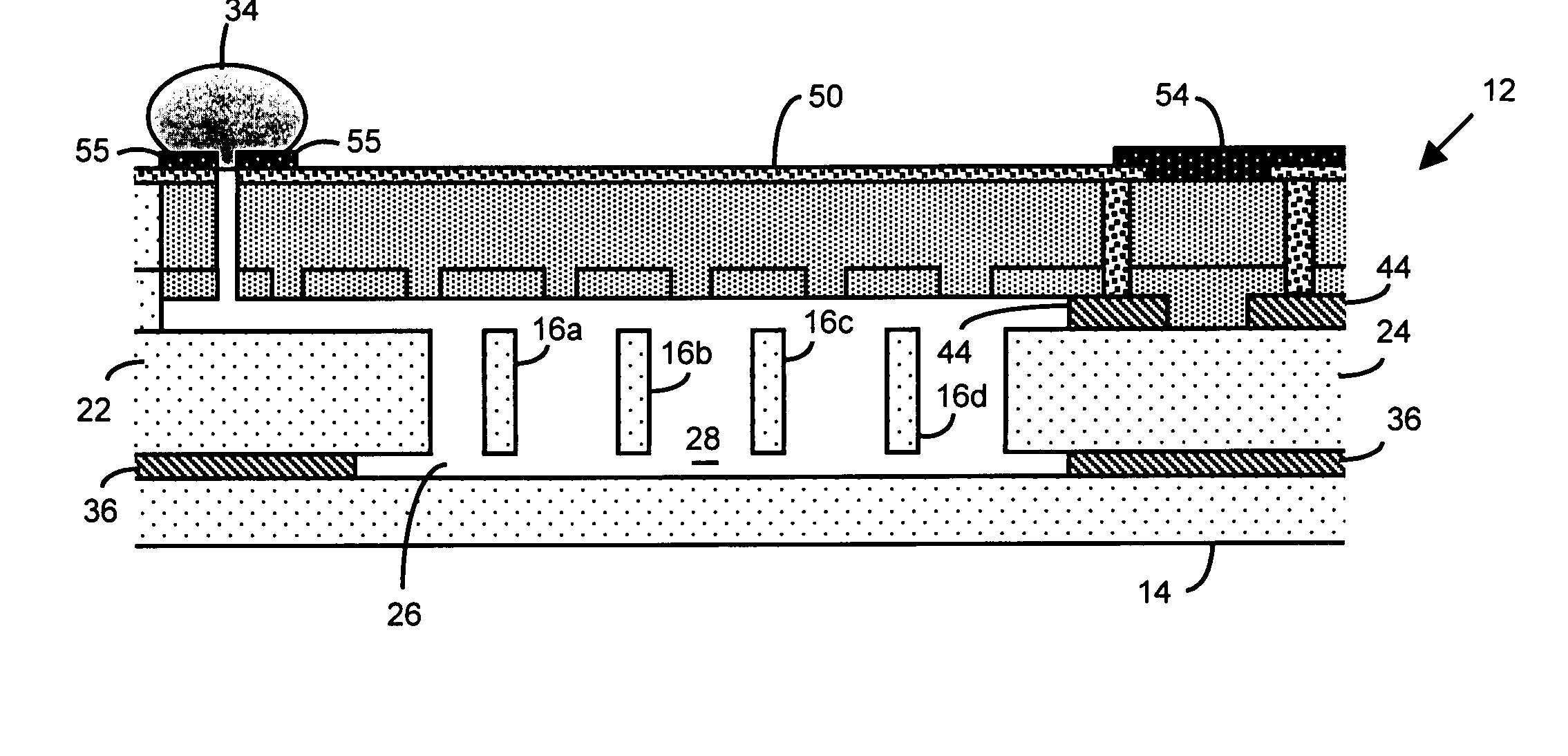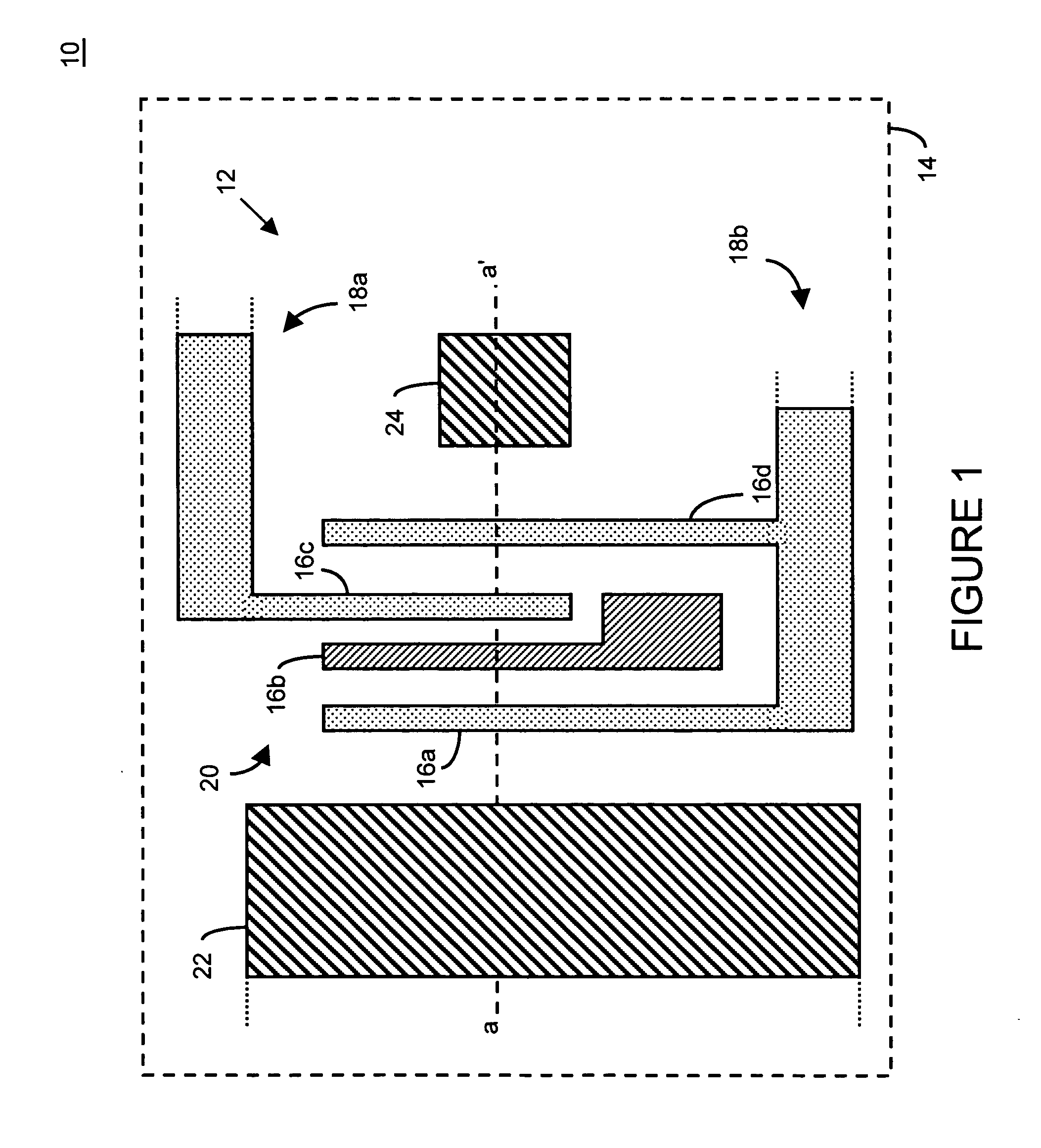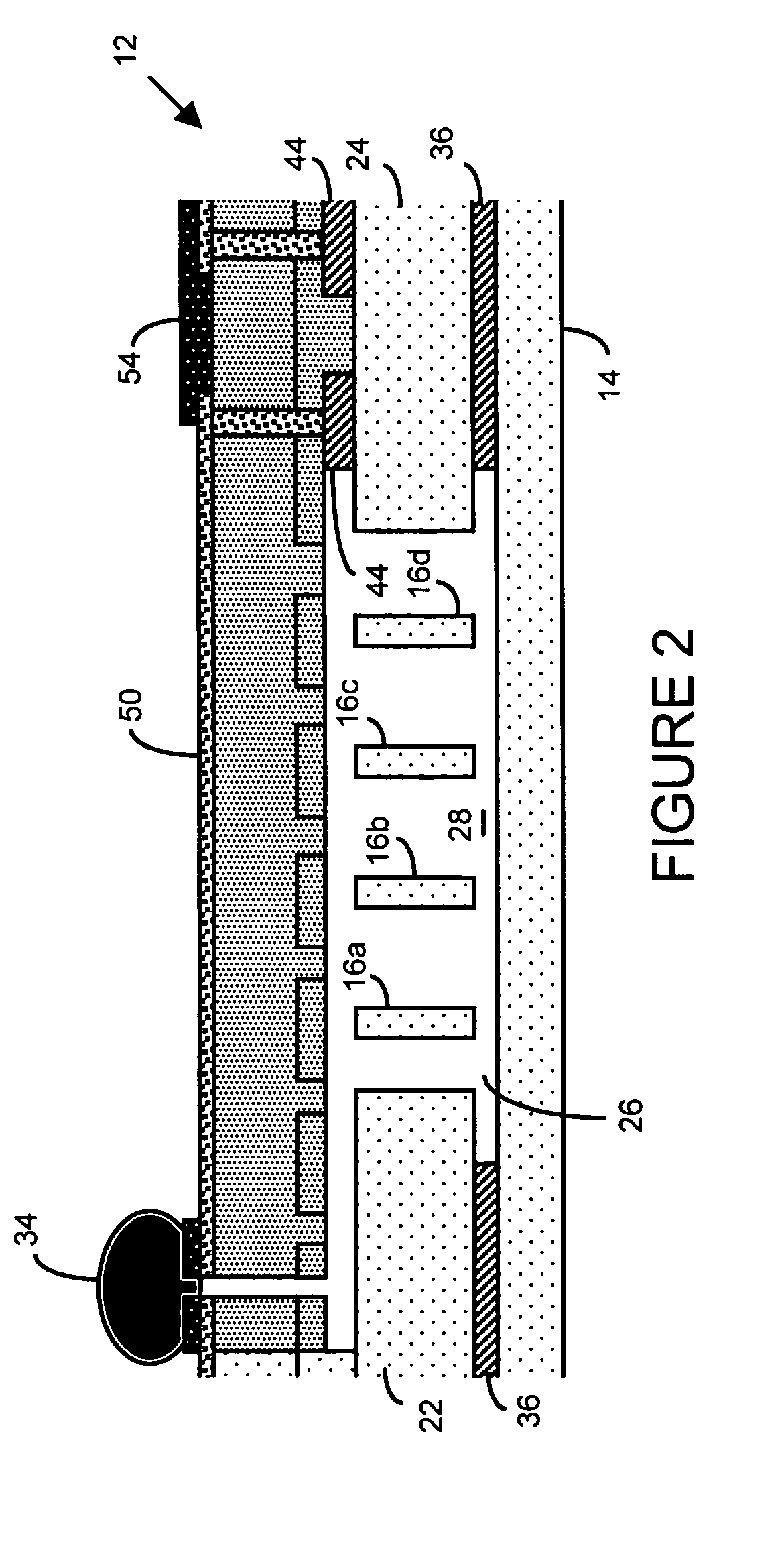Anti-stiction technique for electromechanical systems and electromechanical device employing same
an electromechanical system and anti-stiction technology, applied in the field of electromechanical systems and, can solve the problems of changing the gap distance between moving electrodes and stationary or fixed electrodes, violent acceleration of mems, and electrodes becoming stuck
- Summary
- Abstract
- Description
- Claims
- Application Information
AI Technical Summary
Benefits of technology
Problems solved by technology
Method used
Image
Examples
Embodiment Construction
[0070] There are many inventions described and illustrated herein. One aspect of the present invention is directed to a thin film or wafer encapsulated MEMS, and technique of fabricating or manufacturing a thin film or wafer encapsulated MEMS employing anti-stiction techniques. In one embodiment, after encapsulation of the MEMS, an anti-stiction channel is formed in the encapsulation layer(s) and / or the substrate thereby providing “access” to the chamber containing some or all of the active members or electrodes of the mechanical structures of the MEMS. Thereafter, an anti-stiction fluid (for example, gas or gas-vapor) is introduced into the chamber via the anti-stiction channel. The anti-stiction fluid may deposit on one, some or all of the active members or electrodes of the mechanical structures thereby providing an anti-stiction layer (for example, a monolayer coating or self-assembled monolayer) and / or out-gassing molecules on such members or electrodes. In this way, the mechan...
PUM
 Login to View More
Login to View More Abstract
Description
Claims
Application Information
 Login to View More
Login to View More - R&D
- Intellectual Property
- Life Sciences
- Materials
- Tech Scout
- Unparalleled Data Quality
- Higher Quality Content
- 60% Fewer Hallucinations
Browse by: Latest US Patents, China's latest patents, Technical Efficacy Thesaurus, Application Domain, Technology Topic, Popular Technical Reports.
© 2025 PatSnap. All rights reserved.Legal|Privacy policy|Modern Slavery Act Transparency Statement|Sitemap|About US| Contact US: help@patsnap.com



